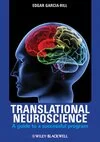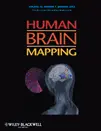Mind-reading has always been a fantastical feat, possible only in fictional realms such as Marvel Comics (X-Men‘s psychics Professor X and Jean Grey), Madeleine L’Engle’s A Wind in the Door, or Robert A. Heinlein’s Stranger in a Strange Land. However, technology is advancing rapidly, and since the advent of brain scanning techniques such as fMRI–which, for those who are unfamiliar with the term, stands for “functional Magnetic Resonance Imaging” and works by showing blood flow to different areas of the brain–humans have come progressively closer to creating technology that can peer inside their own minds.
Until recently, the most researchers have been able decode is stationary objects–such as when subjects viewed an image of a tree. This is due to the fact that fMRI detects blood flow, which moves slowly compared to the fast-paced neural activity that happens when a subject views moving images.
However, in a study recently published in Current Biology,1 researchers at the University of California demonstrated that by using a complex computer program that filled the gaps in data to approximate fast-paced neural activity, they were able to recreate elements of moving visual scenes from fMRI data.
In their experiment, the researchers stuck subjects in fMRI machines and had them watch hours of Hollywood movie trailers. The fMRI output then feeds into the aforementioned computer program, which used the data to learn how each person’s visual system responded to the movie scenes. Finally, the researchers took the brain signals by themselves and successfully recreated what the subjects had been watching.
The implications for this research? Imagination. Dreams. Imagine being able to look into your own subconscious. Now, imagine a machine telling you exactly what just went through your head. That is the technology that is on the way.
| Resources from Wiley on This Topic | |

|
Translational Neuroscience: A Guide to a Successful Program
by Edgar Garcia-Rill |

|
Human Brain Mapping |
|
Medical Image Analysis, 2nd Edition
by Atam P. Dhawan |
|
1.Nishimoto, S., Vu, A., Naselaris, T., Benjamini, Y., Yu, B., & Gallant, J. (2011). Reconstructing Visual Experiences from Brain Activity Evoked by Natural Movies Current Biology, 21 (19), 1641-1646 DOI: 10.1016/j.cub.2011.08.031